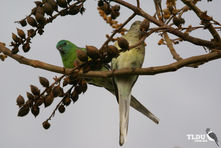
Shoppers Feedback:
Jan 17, 2017
Hello Ros,
I have now paid the invoice, but I would like to write to you just to say a big THANK YOU for getting me the Penguin!
The ChatterMate Penguin became a nice memory for me when I was in New Zealand, and I am so greatful to you for arranging so that I could have it! :-)
Thank you so much!!!!!!!!!!!
Regards,
Malin
Hi Ros,
Many thanks for your very kind email. I really appreciate your prompt reply!
I appreciate your advice regarding the decorations and customs. These are a gift for my daughter’s exchange student family so when she returns home on the weekend I will show her and see if she loves them as much as I do!
Thanks so very much again - I am truly grateful for your kind assistance.
Kind Regards
Bernadette
Ros,
Thanks again for the great customer service. It's a refreshing change!
Best regards,
Trevor
Hey Roz,
Thank you for your emails. Just loved my first order. The cute little Aussie bush critters are going to be used for an office Christmas decoration. My colleagues also liked them and talked about making an order to your site. I'll send you a photo when completed.
I'll be ordering more to send to my daughter's host family in America.
Fabulous service from you.
Kind regards,
Michelle
Thankyou. Order arrived today. One very happy grandson with his new beastly binoculars.
Regards,
Irene
- Home
- Wild Wonders
- Shop
- Aromas of Australia
- Australian Made
- Books
- Book Marks
- Christmas Decoration Sale
- Christmas Decorations
- Clocks
- Drink Holders
- Garden & Outdoor
- Gift Wrapping & Cards
- Home & Giftware
- Jewellery
- Keyrings
- New Products
- Pencils & Pen Holders
- Photo Frames
- Plush Toys
- Plush with Sound
- Sheepskin Rugs
- Stationery
- Stone Carvings
- Toys & Games
- Travel Goods
- Wedding
- Wild Figurines
- Wildlife Safety Products
- Wind Chimes
- Wine Charms
- View All Products
- Wildlife
- Australiana
- Explore
- Contact Us
Red-rumped Parrot

Quick Facts
| Length: | 27 cm |
| Height: | - |
| Weight: | 65 grams |
| Colour: | Bright green, blue-green head, red rump, yellow shoulders and belly |
| Habitat: | Open grasslands or lightly timbered plains |
| Food: | Seeds and leaves of grasses. Fruits, seeds and flowers in trees |
| Predators: | - |
| Status: | Secure in NSW, QLD, SA & VIC. Not Present in NT, TAS & WA |
Red-rumped Parrots are medium-sized, slender parrots. The adult male is bright green, with a blue-green head, a red rump, and yellow shoulders and belly. The female is a duller, olive-green, with a green rump and faint yellow or light green scales on the belly. Young birds of both sexes are duller in colour.
The similar Mulga Parrot has a yellow band above the bill, a red patch on the nape of its neck, a light green band across the upper rump. It has a smaller, darker red patch on the upper tail, in both sexes, which is also much lower than the red rump of the Red-rumped Parrot, which only appears on the male.
The Red-rumped Parrot is found in south-eastern Australia, throughout most of New South Wales (less so on the coast) and Victoria, with an isolated population in north-eastern South Australia and south-western Queensland. Aviary escapes may have increased populations in some areas, especially around the Central Coast and Sydney, New South Wales.
The Red-rumped Parrot is found in open grasslands or lightly timbered plains, as well as along watercourses and in mallee farmlands with access to water.
The Red-rumped Parrot feeds in pairs or small flocks on the ground, preferring seeds and leaves of grasses. It also will feed on seeds, fruits and flowers in trees. Often seen feeding in suburban parks around Melbourne. They will feed with other parrots, including Eastern Rosellas and Galahs.
Red-rumped Parrots mate for life. The female chooses and prepares the nesting site, usually a hollow in a eucalypt tree (but will sometimes use a nest-box or other artificial site). Eggs are laid on a decayed wood bed and the female incubates the eggs while the male regularly feeds her. The young can be fed for a while after they fledge.
The Red-rumped Parrot is often hit by cars when feeding by roads, and is often killed by domestic pets, especially cats.
Last Updated: Thursday 18th July, 2013
BirdLife Australia - www.birdlife.org.au
BUSH e-TELEGRAPH
Signup for our monthly newsletter the "e-Telegraph"
Quick Links
Home | The Beginning | About The Land Down Under | Wild Wonders | Advertise on Wild Wonders | Christmas Decoration Sale | Christmas Tree Decorations | Drink Holders | Plush with Sound | Stone Carvings | Wildlife Wine Charms | Freebies | Australian Wildlife | Help Our Wildlife | Australiana | Photo of the Month | Explore The Land Down Under | Contact Us | Legal Notices

